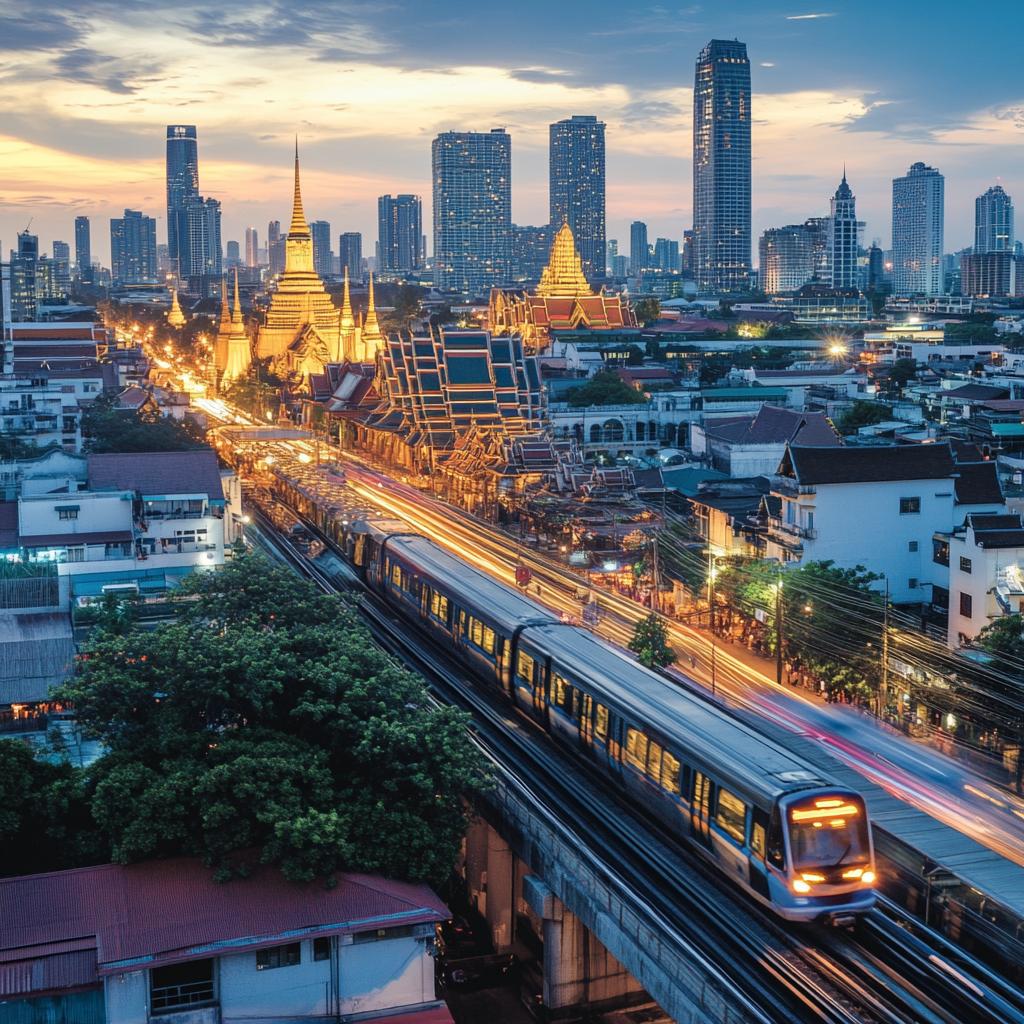As the vibrant lights of Honolulu mingled with the evening sun, a distinguished delegation from Bangkok was welcomed by none other than Mr. Mike Formby, the Managing Director of the City and County of Honolulu. Alongside him stood key officials from the Honolulu Authority for Rapid Transportation (HART), set to embark on an enlightening dialogue about the future of urban mobility. The heart of this riveting conversation? The age-old urban dilemma of moving growing populations effectively through rapidly transforming cityscapes.
Honolulu, with the gleam of its new rail transit system, opened the discussion, while Bangkok’s team shared pearls of wisdom from their BTS Skytrain network. The challenges faced by both cities were strikingly similar—transport infrastructure and expansion. Yet, the discussions radiated a shared passion for modernizing transit systems that are not only efficient but also sustainably aligned with public demand.
Beyond the realm of transit and tracks, the Bangkok delegation took a cultural detour to the majestic Iolani Palace, Hawaii’s historic royal residence. Here, discussions veered towards heritage preservation and tourism management. With Bangkok’s Grand Palace drawing millions from across the globe, this was more than an exchange of pleasantries—it was a practical discourse on safeguarding cultural landmarks while making them accessible to world travelers.
“This visit marks the first official city-to-city engagement between Bangkok and Honolulu,” declared Dr. John with unmistakable enthusiasm. “Our learning extends beyond mere transit methodologies; we delve into the realms of history conservation and ethical tourism elevation. Iolani Palace is a cultural jewel to Hawaii as the Grand Palace is to Thailand. Through our exchanges on urban planning, transit systems, and heritage conservation, we are laying a strong foundation for enriched collaboration.”
The Bangkok delegation was a tapestry of knowledge, including key city council figures like:
- Somchai Tempaiboonkul from Khlong San District
- Sutthichai Veerakulsunthorn representing Chom Thong District
- Wirat Khongkhaket of Bangkok Yai District fame
- Chayada Wiphatiphumiprathet from Khan Na Yao District
- Narongsak Muangsiri of Bang Bon District
- Netiphum Mingrujiralai for Bueng Kum District
- Kittipong Ruayfuphan from the thriving Thung Khru District
A mutual sense of inspiration enveloped the air as Formby and HART’s representatives soaked in the wonders of Bangkok’s multi-modal transit success. The seamless integration of the BTS Skytrain, MRT, and public boat services provided them with a vision of urban mobility redefined. In return, the Bangkok team garnered profound insights from Honolulu’s rail transit aspirations, particularly in savvy project management, diverse funding models, and sustainable growth strategies.
Though this visit marked the dawn of a newfound connection, the message resounded loud and clear: Bangkok and Honolulu stand to gain immensely from this synergy. Whether it’s about reinventing transit systems, fortifying cultural sites, or scripting the next chapter of urban evolution, this alliance holds promise beyond measure.


















This collaboration between Bangkok and Honolulu sounds promising, but I’m skeptical. Public transit projects often turn into money pits with endless delays.
That’s a valid point, but maybe collaboration could actually speed things up. Each city could learn from the other’s past mistakes.
True, but what if they end up just copying each other’s mistakes instead? History often repeats itself.
These projects should include more local voices so they don’t just repeat past errors. Inclusivity is key.
I love the cultural exchange aspect, but how do you ensure the heritage sites aren’t exploited in the name of tourism?
Fair point, Tina! Cultural sites should be preserved, not commercialized at the expense of their historical integrity.
Absolutely! These discussions should focus on sustainable tourism that respects historical sites.
Unfortunately, tourism often leads to commercialization no matter how well-meaning these initiatives start out. It’s about finding a balance.
This is more than just an urban mobility project; it’s a celebration of cross-cultural ties!
Right, but while celebrating culture is fine, people need tangible results like better transport first.
True, but culture adds value and context, leading to long-term benefits. It’s not always just about the immediate outcome.
I’m fascinated by how the Bangkok Skytrain model can integrate with Honolulu’s new rail system. This is what sustainable growth looks like.
Anybody else worried that more tourists might just mean more overcrowding? These cities are already packed!
As long as they focus on ‘sustainable’ like they said, overcrowding should be manageable.
Agreed. Proper planning is crucial, but they need to stick to it without yielding to pressure.
Why aren’t they including local residents in these discussions? It’s our neighborhoods that will be affected.
Exactly! Where’s the transparency for us locals who will be most impacted by these mega-projects?
Good question, Harry. All these big ideas sound great on paper but what about our voices?
If there’s one thing to take away, it’s the potential for tech innovation! Bangkok’s digital integration could elevate the HART system.
That sounds cool, but does rapid transit fit with Hawaii’s laid-back lifestyle? People go there to escape the rat race!
Haha, fair point, but wouldn’t a quick, reliable transit make relaxation easier by cutting down commute hassles?
The key is avoiding a one-size-fits-all solution; every city has unique needs.
Exactly! Honolulu and Bangkok are so different that a customized approach is the only sensible path.
Mutual inspiration from each other’s transit success? They make it sound so easy, but execution is EVERYTHING.
All these talks are great, but will anything tangible come out of this? Too often, these are just empty promises.
Hopefully this isn’t just another photo-op moment. It’d be a letdown if nothing changes.
Let’s cut the cynicism; this could very well mark an exciting new chapter in urban development!
Cross-border collaborations like these bring needed innovation. Let’s be optimistic about it!